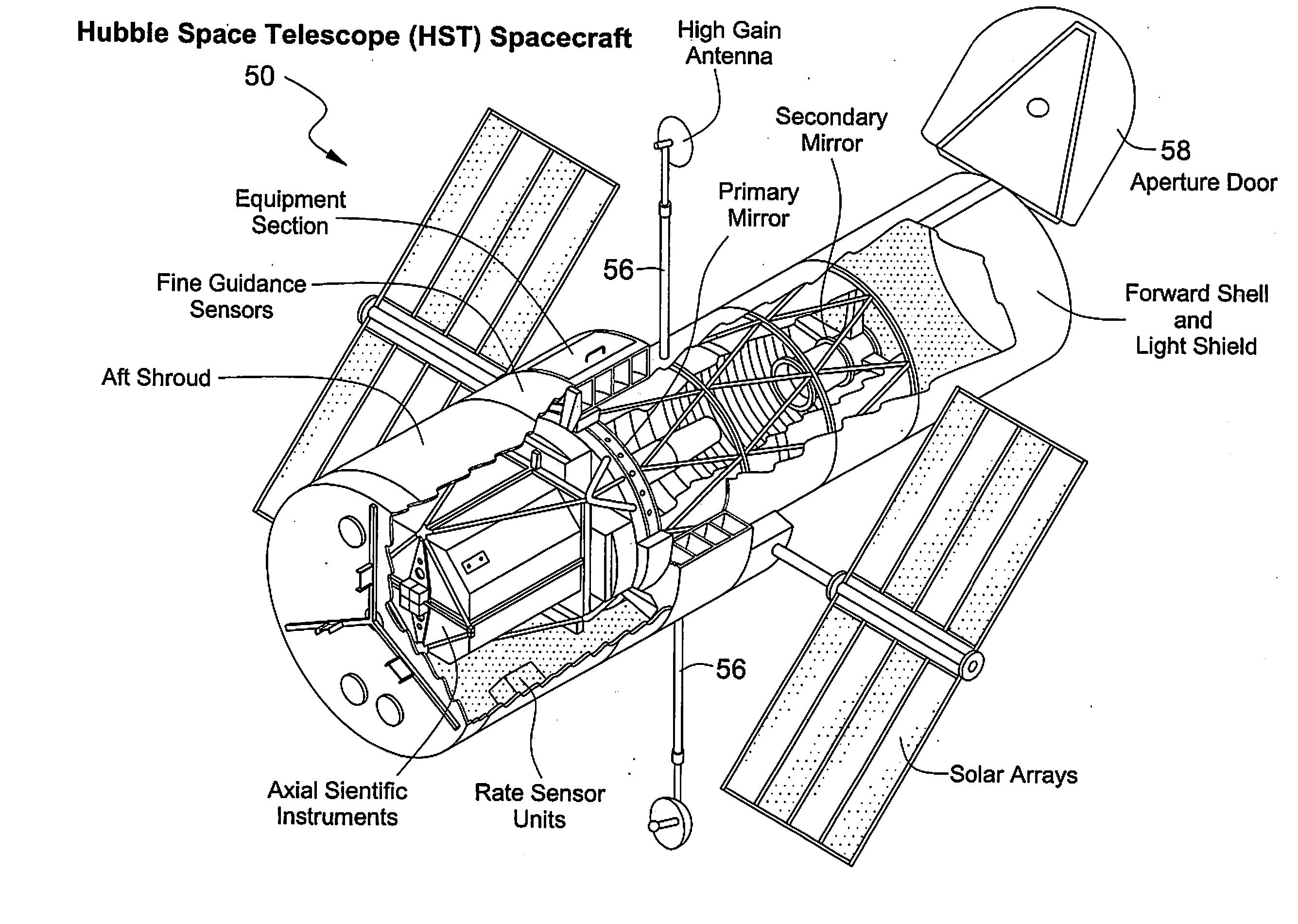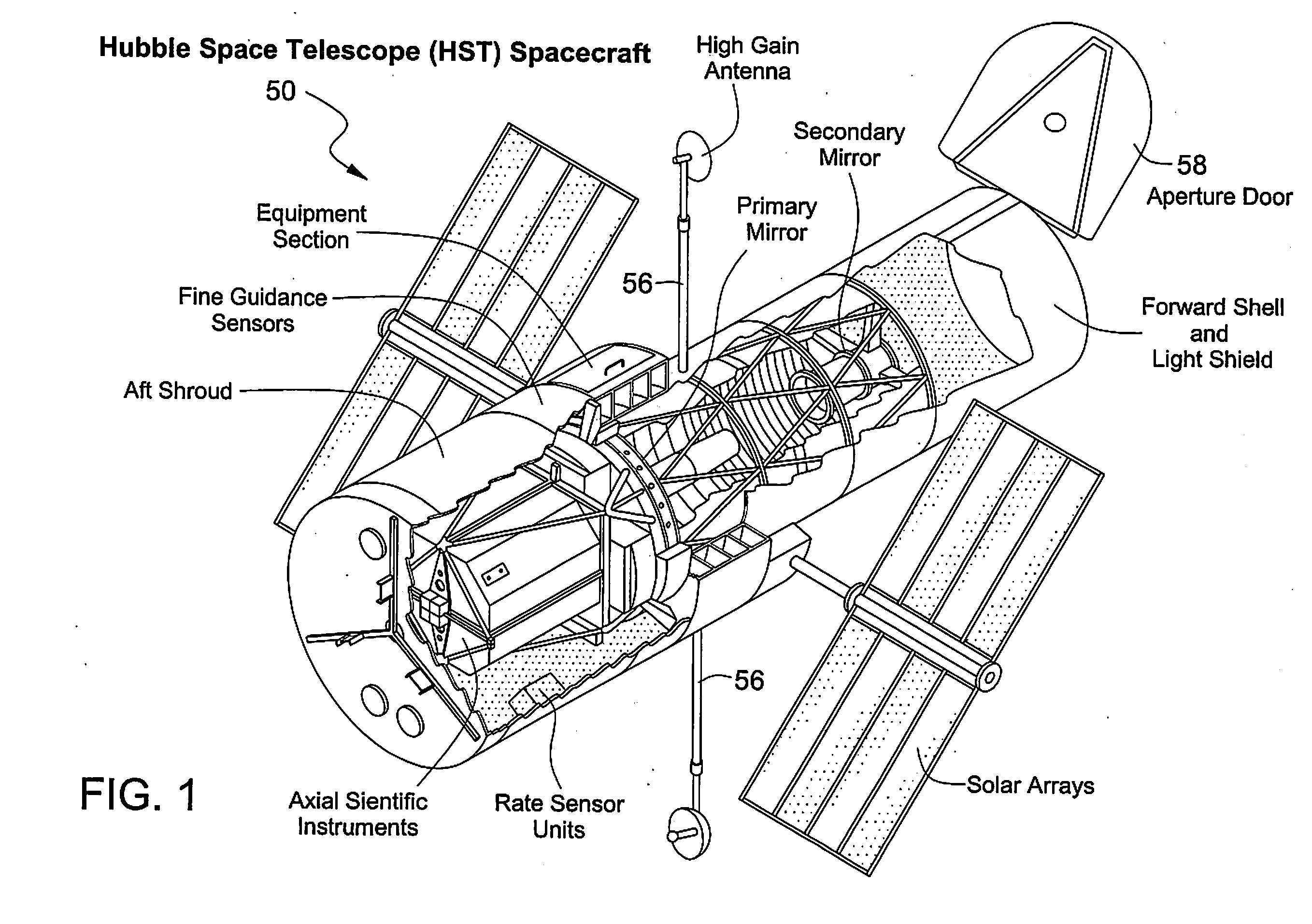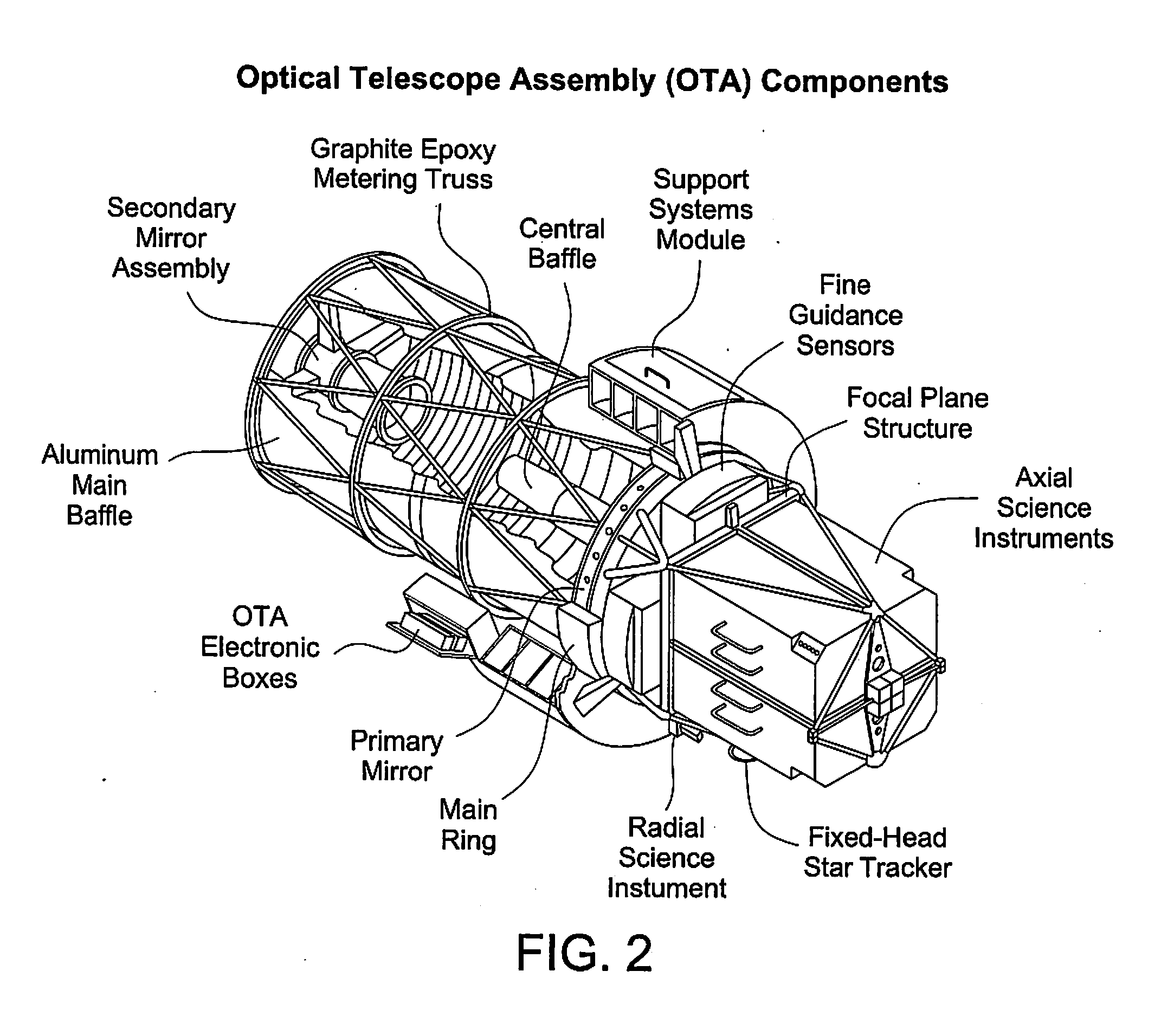[0038] Accordingly, one method of the present invention comprises the nominal steps of autonomously establishing a link between a spacecraft needing servicing and a servicing vehicle, and sending commands to a robot system aboard the servicing vehicle, such commands addressing the servicing needs of the spacecraft. The commands may be pre-scripted or generated on board the servicing vehicle by using embedded Artificial Intelligence (AI) logic or other on board processing in response to sensed conditions. The robot system preferably comprises a grappling arm and a dexterous robot, which, in combination, provide for most servicing needs, such as replacing degraded batteries and upgrading the scientific capabilities of the spacecraft by replacing scientific instruments. The servicing vehicle may aid in other ways as well, such as by providing stowage area for replacement parts, by shielding the spacecraft from the harmful effects of the sun during servicing, and by boosting the altitude of the spacecraft's orbit by firing its thrusters.
[0042] Tools and space parts for a plurality of spacecraft may be transported on the ejection module to facilitate servicing and / or de-orbit of a plurality of satellites. Such a generic or multi-satellite serving vehicle may be of particular interest to manufacturers of families of satellites using multiple substantially similar satellites with common components. Such a vehicle could potentially reduce or eliminate the need for costly on-orbit or ground based spare satellites. Rather than placing one or more on orbit spares in orbit in anticipation of potential failures, the present invention provides an alternative means to provide a flexible servicing capability that may enable rapid return to service of a variety of satellites without requirement for entire dedicated spares for each type of satellite. Use of modular design and construction of satellites and commonality among satellite designs can be used to maximize the potential repairability of future satellites. Constellations of substantially identical satellites, such as Iridium, GlobalStar and other communications satellites, stand to gain the greatest potential benefit of the repair capabilities of the present invention due to the use of common parts and their relative accessibility to repair vehicles due to their relatively low earth orbit.
[0043] Even for satellites in higher orbits, such as geostationary orbits, it may be more cost effective to conduct a robotic repair / servicing mission to extend the useful life of valuable communications and other satellite payloads presently on orbit, rather than to construct and launch entire replacement satellites. The use of the present invention also has the potential to reduce the amount of orbital debris in orbit by removing inoperative satellites from orbit.
[0044] In the geostationary band, it is generally considered cost-prohibitive to deorbit spent satellites, and satellites are generally boosted to a higher orbit that will not affect satellites in the geostationary band. Use of a repair mission in accordance with the present invention potentially could reduce the problem of clutter from spent satellites above geostationary orbit by extending the useful life of satellites and delaying their eventual boost to higher orbit. Even if it is necessary to boost the ejection module into higher-than-geostationary orbit, one such module may be used to service multiple geostationary satellites, resulting in a lower net contribution to the clutter in the higher-than-geostationary band.
[0045] One cause of end-of-life, particularly in geostationary satellites, is exhaustion of fuel used for stationkeeping and other maneuvers. Attaching a deorbit module to a geostationary satellite to provide for end-of-life boost above geostationary orbit can permit the use of fuel onboard the geostationary satellite for revenue producing purposes that was previously reserved (as required by international law and conventions) for the end-of-life boost maneuver. Exhaustion of fuel for attitude control thrusters may also cause a satellite to lose attitude control capability and thus reach the end of its useful life. In accordance with the present invention, it is possible for the servicing vehicle to transfer additional fuel to the target satellite for stationkeeping in the geostationary band or continued use of attitude control thrusters to allow it to extend its useful life.
[0049] Another method of this invention includes the steps of securing a de-orbit module to the spacecraft to be serviced and commanding the de-orbit module to de-orbit the spacecraft. For the purposes of the present invention, de-orbit includes both the removal of a spacecraft from orbit through reentry or transfer of a satellite to a disposal orbit, i.e. transferring a geostationary satellite to higher than geostationary orbit for disposal at end of life. One skilled in the art will appreciate that the de-orbit module allows for the flight path of the spacecraft to be controlled so that population centers can be avoided and impact can be targeted for an ocean or other desired location. If it is desired to de-orbit multiple satellites, a plurality of de-orbit modules can be transported by a single ejection module. Through sequential rendezvous and attachment of a de-orbit module followed by detachment of the ejection module, a plurality of satellites not originally designed for de-orbit can be provided with a de-orbit capability. Alternately, a satellite that has suffered a kick motor failure that prevented it from reaching its desired orbit similarly can have the faulty kick motor replaced with an operational replacement to permit the affected satellite to reach its design orbit.
 Login to View More
Login to View More  Login to View More
Login to View More 


